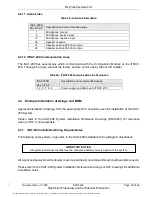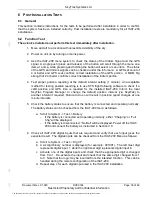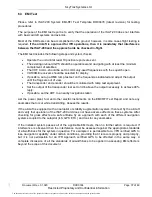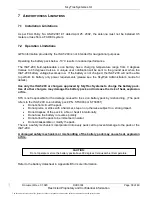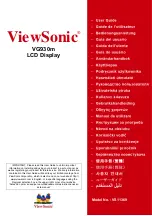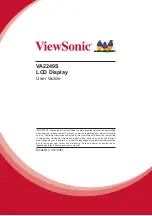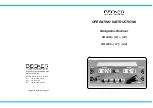
This information is generally descriptive only and is not intended to make or imply any representation, guarantee or warranty with respect to any cells
and batteries. Cell and battery designs/specifications are subject to modification without notice. Contact Panasonic for the latest information.
Panasonic
JANUARY 2007
NOTES AND PRECAUTIONS
Safety Precautions for the Lithium Ion Battery Pack
Use of Lithium Ion Batteries and the Design of Equipment That Uses These Batteries
In general, lithium ion batteries are used in battery packs that contain both lithium ion batteries and battery
protection circuits. Both items are sealed in a container made of a material such as resin so that the battery
pack cannot be easily disassembled.
1. Charging the Batteries
The “constant voltage/constant current” method is used to charge lithium ion batteries. (See Figure below.)
(1) Charge Voltage
The maximum voltage is 4.2 V x the number of cells connected in series.
(2) Charge Current
We recommend 0.7 CmA.
When the voltage per cell is 2.9V or less, charge using a charge current of 0.1CmA or less.
(Contact Panasonic for information regarding pulse charging.)
(3) Charge Temperature
The batteries should be charged at temperatures between 0°C and 45°C.
(4) Reverse-polarity Charging
Verify the polarity of the batteries before charging to ensure that they are never charged with the polarity
reversed.
2. Discharging the Batteries
(1) Discharge Current
The current should be maintained at 1.0 CmA or less (Consult Panasonic if you plan to discharge the
batteries with a current in excess of 1.0 CmA).
(2) Discharge Temperature
The batteries should be discharged at a temperature between -20°C and +60°C.
(Consult Panasonic if you plan to discharge the batteries at temperatures less than -10°C.)
(3) Discharge Termination Voltage
Avoid discharging at voltages less than 3.0 V per cell. Over discharge can damage the performance of the
battery. Equip the unit with a mechanism to prevent over discharge, especially in situations where the user
may forget to turn the equipment off.
The document reference is online, please check the correspondence between the online documentation and the printed version.

